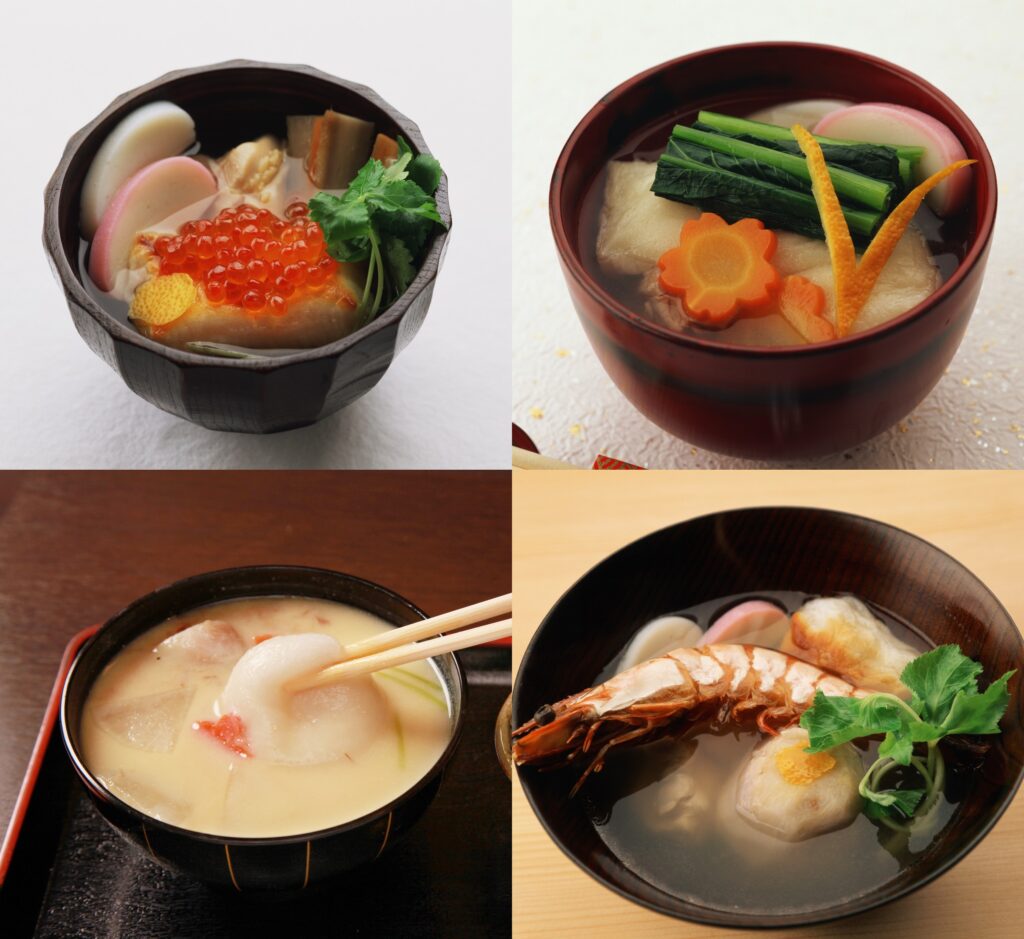2024.05.16
宙ちゃんの「伝統文化一直線」宙ちゃんの「伝統文化一直線」 第4回 和食がユネスコ無形文化遺産となった決め手
近藤宙時=日本伝統文化検定協会理事

写真/地域ごとに特色のあるお雑煮。左上から青森県、東京都、京都府、鹿児島県のもの(時事通信フォト)
2013年に「和食:日本人の伝統的な食文化」がユネスコ(国連教育科学文化機関)の無形文化遺産に登録されてから10年余りがたちました。今や日本食は世界で最も人気の高い料理だと言ってもいいでしょう。今年のゴールデンウイークも、各地の料亭やレストランは本物の日本料理を求める外国人観光客であふれ返りました。
日本政府がユネスコに提案した「和食」の内容は①新鮮で多様な食材とその持ち味の尊重②栄養バランスに優れた健康的な食生活③自然の美しさや季節の移ろいを表現した盛り付け④正月行事などの年中行事との密接な関わり―という4点でしたが、無形文化遺産登録の決め手となった料理があるのをご存じでしょうか。
実は、寿司や刺身でもなければ天ぷらでもありません。お雑煮です。そう、お正月に家族みんなで頂く、あの定番の一品(ひとしな)が、後世に残すべき日本の食文化の象徴として高く評価されたのです。登録実現の立役者で、京都の老舗料亭「菊乃井」3代目当主の村田吉弘さんがそうおっしゃっているのですから間違いないでしょう。
太平洋戦争を境に日本人の普段の食生活は急速に西洋化が進みましたが、今でもお正月になれば、古くから神への供え物に用いられた餅を主役とするお雑煮が日本中で食べられています。ただ、一口に「お雑煮」と言っても、餅の形やだしの取り方、具材の選択や調理法は地域によって全く異なります。細かく見れば何百種類にもなる、驚くほどバラエティーに富んだ料理です。
戦乱が繰り返される中にあっても一つの王朝が連綿と続いた日本では、都の文化や風習が長い年月の間に国の隅々にまで行き渡りました。その過程でさまざまな変化を生みだしたのが、南北に細長い国土と、海、山、里の表情豊かな地形がもたらす多様な気候風土です。食材という形で自然そのものを取り入れる食文化には、とりわけ顕著にその影響が表れました。
ハレの日の定番の家庭料理というだけなら、アメリカにだって感謝祭やクリスマスに出てくる七面鳥の丸焼きがあります。しかし、お雑煮ほど郷土色豊かな行事食は世界的にも他に例がありません。一国の中での文化の普遍性と圧倒的な多様性の共存。これこそが和食の特徴であり、お雑煮はその奥深さを体現しているのです。
カテゴリー: 宙ちゃんの「伝統文化一直線」
関連タグ: #食文化





